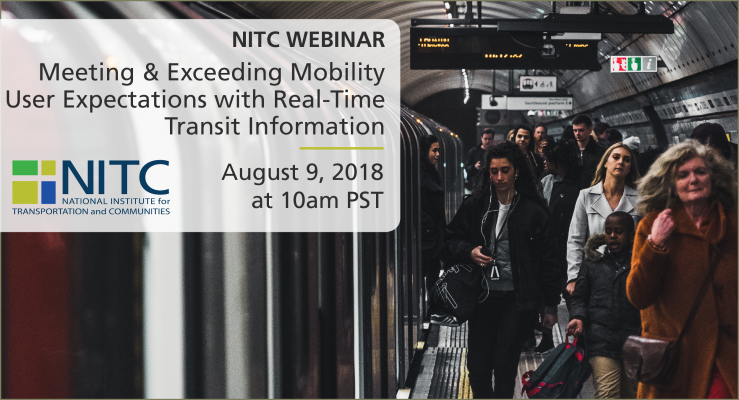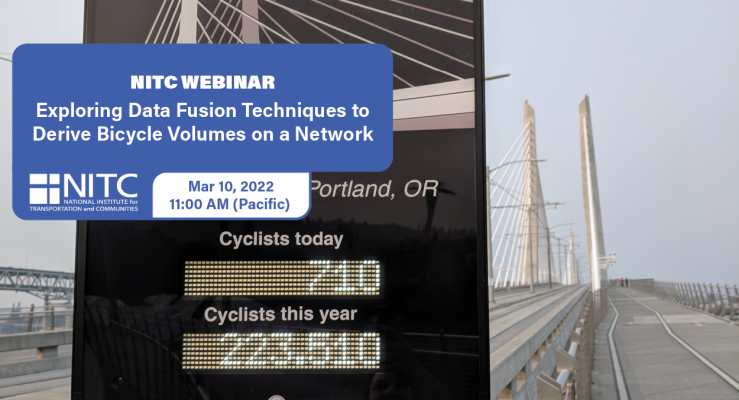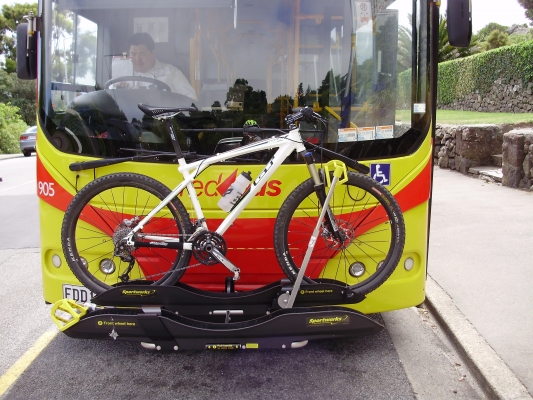WATCH THE RECORDED VIDEO
PRESENTATION SLIDES
Miss the presentation or want a look back? You can view the presentation slides here.
OVERVIEW
Every day transit riders ask the same question: when’s the next one coming? To answer this question, transit agencies are transitioning to providing real-time transit information through smartphones or displayed at transit stops.
The proliferation of transit planning and real time arrival tools that have hit the market over the past decade is staggering. Yet with transit ridership on the decline, agencies can’t afford to ignore the importance of providing accurate, real time information to their customers. Real-time transit information improves the reliability and efficiency of passenger travel, but barriers have prevented some transit agencies from adopting the GTFSrealtime v1.0 technology. A new NITC-funded study in May led by Sean Barbeau of the University of South Florida seeks to...
Read more


